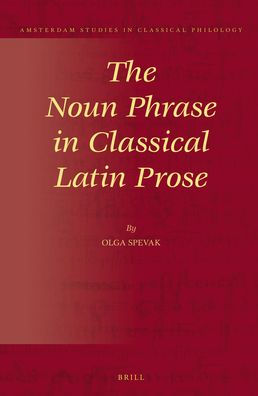The Noun Phrase in Classical Latin Prose
The internal ordering of Latin noun phrases is very flexible in comparison with modern European languages. Whereas there are a number of studies devoted to the variable placement of modifiers, The Noun Phrase in Classical Latin Prose proposes an entirely new approach: a discussion of the semantic and syntactic properties of both nouns and modifiers. Using recent insights in general linguistics, it argues that not only pragmatic factors but also semantic factors (whether we are dealing with an inherent property, the author’s assessment, or a further specification of a referent) are responsible for the internal ordering of Latin noun phrases. Additionally, this book discusses prepositional phrases functioning as modifiers, and appositions, which have received little attention in the literature.
1118395028
The Noun Phrase in Classical Latin Prose
The internal ordering of Latin noun phrases is very flexible in comparison with modern European languages. Whereas there are a number of studies devoted to the variable placement of modifiers, The Noun Phrase in Classical Latin Prose proposes an entirely new approach: a discussion of the semantic and syntactic properties of both nouns and modifiers. Using recent insights in general linguistics, it argues that not only pragmatic factors but also semantic factors (whether we are dealing with an inherent property, the author’s assessment, or a further specification of a referent) are responsible for the internal ordering of Latin noun phrases. Additionally, this book discusses prepositional phrases functioning as modifiers, and appositions, which have received little attention in the literature.
186.0
In Stock
5
1

The Noun Phrase in Classical Latin Prose
378
The Noun Phrase in Classical Latin Prose
378Hardcover(Bilingual)
$186.00
186.0
In Stock

Product Details
| ISBN-13: | 9789004264427 |
|---|---|
| Publisher: | Brill Academic Publishers, Inc. |
| Publication date: | 01/09/2014 |
| Series: | Amsterdam Studies in Classical Philology , #21 |
| Edition description: | Bilingual |
| Pages: | 378 |
| Product dimensions: | 6.30(w) x 9.40(h) x 1.00(d) |
About the Author
From the B&N Reads Blog
